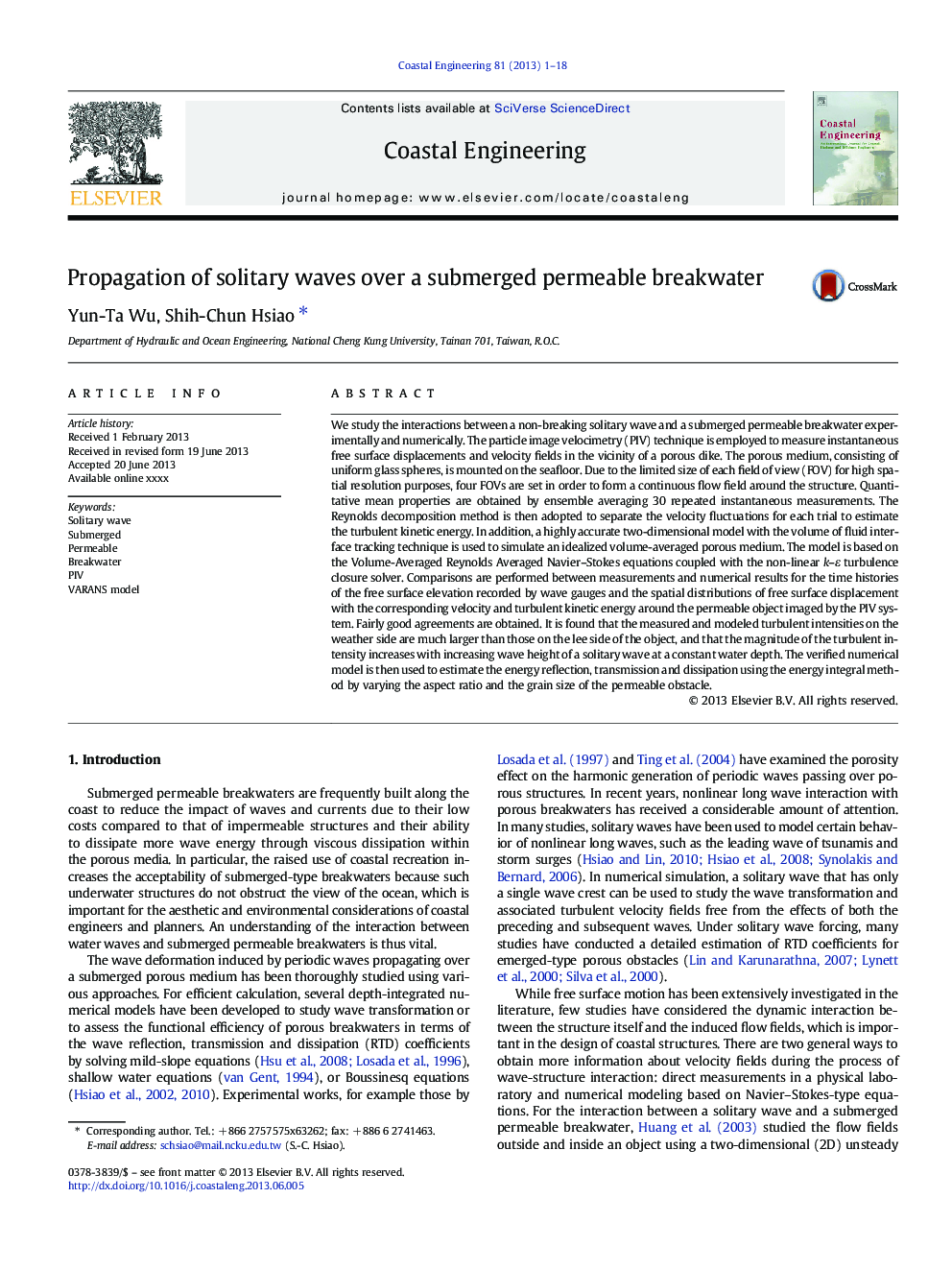| کد مقاله | کد نشریه | سال انتشار | مقاله انگلیسی | نسخه تمام متن |
|---|---|---|---|---|
| 8059881 | 1520373 | 2013 | 18 صفحه PDF | دانلود رایگان |
عنوان انگلیسی مقاله ISI
Propagation of solitary waves over a submerged permeable breakwater
ترجمه فارسی عنوان
انتشار امواج انفرادی بیش از یک موج شکن آب زیرزمینی
دانلود مقاله + سفارش ترجمه
دانلود مقاله ISI انگلیسی
رایگان برای ایرانیان
موضوعات مرتبط
مهندسی و علوم پایه
سایر رشته های مهندسی
مهندسی دریا (اقیانوس)
چکیده انگلیسی
We study the interactions between a non-breaking solitary wave and a submerged permeable breakwater experimentally and numerically. The particle image velocimetry (PIV) technique is employed to measure instantaneous free surface displacements and velocity fields in the vicinity of a porous dike. The porous medium, consisting of uniform glass spheres, is mounted on the seafloor. Due to the limited size of each field of view (FOV) for high spatial resolution purposes, four FOVs are set in order to form a continuous flow field around the structure. Quantitative mean properties are obtained by ensemble averaging 30 repeated instantaneous measurements. The Reynolds decomposition method is then adopted to separate the velocity fluctuations for each trial to estimate the turbulent kinetic energy. In addition, a highly accurate two-dimensional model with the volume of fluid interface tracking technique is used to simulate an idealized volume-averaged porous medium. The model is based on the Volume-Averaged Reynolds Averaged Navier-Stokes equations coupled with the non-linear k-ε turbulence closure solver. Comparisons are performed between measurements and numerical results for the time histories of the free surface elevation recorded by wave gauges and the spatial distributions of free surface displacement with the corresponding velocity and turbulent kinetic energy around the permeable object imaged by the PIV system. Fairly good agreements are obtained. It is found that the measured and modeled turbulent intensities on the weather side are much larger than those on the lee side of the object, and that the magnitude of the turbulent intensity increases with increasing wave height of a solitary wave at a constant water depth. The verified numerical model is then used to estimate the energy reflection, transmission and dissipation using the energy integral method by varying the aspect ratio and the grain size of the permeable obstacle.
ناشر
Database: Elsevier - ScienceDirect (ساینس دایرکت)
Journal: Coastal Engineering - Volume 81, November 2013, Pages 1-18
Journal: Coastal Engineering - Volume 81, November 2013, Pages 1-18
نویسندگان
Yun-Ta Wu, Shih-Chun Hsiao,
